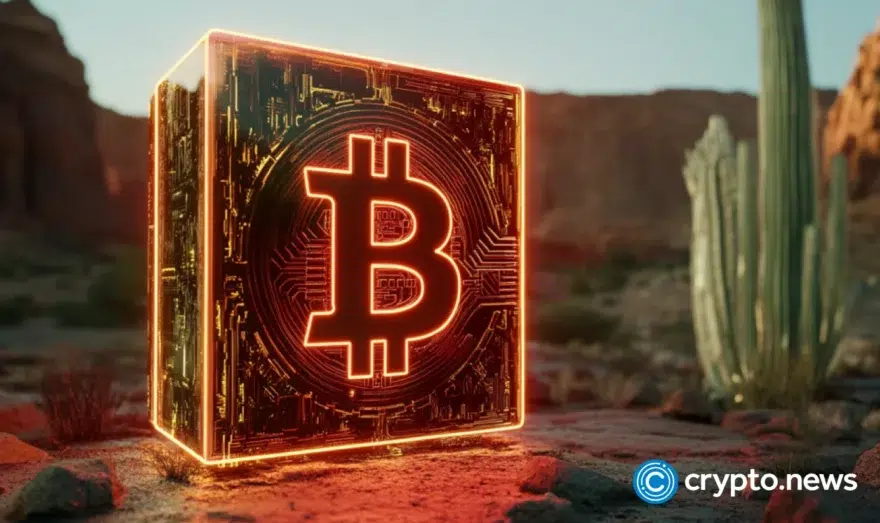What is Physical Bitcoin? The real-world version of BTC

Physical Bitcoin may seem like a curious concept to those new to the cryptocurrency world. After all, Bitcoin is a digital asset, right? However, in 2011, Mike Caldwell introduced the idea of physical bitcoins, essentially physical representations of the digital currency. Before this, Bitcoin was strictly a digital currency since its inception in 2009.
Caldwell is an early Bitcoin (BTC) believer who jumped on the train before it became a frantic rush in subsequent years. There are threads of him on the BitcoinTalk forum where he used the pseudonym Casascius.
Table of Contents
Understanding physical bitcoins
On September 6, 2011, Casascius posted a thread on BitcoinTalk where he addressed the reasons why he came up with the idea of real bitcoins. His major selling point was to improve the chances of Bitcoin becoming a successful currency.
Caldwell explained how he wished someone would come up with a better invention of Physical Bitcoin in the future and how this invention is not lifelong work for him. His wish later came true because today, we have other physical forms of Bitcoin.
Caldwell’s physical Bitcoin looked just like traditional coins. Back in 2011, the cost of sending one Bitcoin was worth 1 Bitcoin. This was because after calculating the cost of production, it was worth 1.25 BTC. Therefore, with the postage cost, he set the total expense to be worth 1btc at the time.
The make-up of Physical Bitcoin
BTC address were embedded on each coin.
Back then, someone with the username ‘The Joint‘ on the Bitcoin forum expressed his thoughts about the innovation, saying:
“These look awesome, but why would you buy this given the current state of the Bitcoin market/economy? This might be nice as an investment if there was a good indicator that your investment would give you any kind of return.”
When he wrote these words, 1 BTC was trading for $6.86.
Decent level of success in its short existence
To the amazement of Bitcoin onlookers at the time, Caldwell’s physical crypto coins were successful as many people ordered them. This necessitated him to follow up on other denominations. His invention was initially limited to 1 Bitcoin, but with its success, he followed up with ten Bitcoin, 25 Bitcoin, 100 Bitcoin, and even 1,000 Bitcoin editions.
At Bitcoin’s peak, in January this year (2025), that holographic 1,000 BTC coin would have been worth around $109 million. Caldwell’s invention lasted until 2013, when he recorded about 28,000 Bitcoins in sales. The physical bitcoins price can vary greatly, with rare editions sometimes fetching much higher prices due to their collector value.
Other physical bitcoins
Casascius’ invention has inspired other tangible Bitcoin inventions. While BTC has remained a primarily digital currency, today, there are actual bitcoins inspired by Casascius’ innovation. Those that exist today exist in the form of paper wallets, trinkets, and commemorative coins.
One notable example of such a creation is the Physical Bitcoin MJB 2013, which was released as part of a series of collectible physical coins. This type of physical Bitcoin follows the same principle as Casascius’ coins, with the added appeal of being a collector’s item.
In today’s cryptosphere, anything can represent physical Bitcoin, as long as it has private and public keys printed on it, and can hold any amount of the cryptocurrency.
Legality of owning physical bitcoins
If you’re in a country where cryptocurrencies are legal, owning a physical bitcoin is generally no problem. But creating these real bitcoins for sale could run into legal trouble if it doesn’t comply with certain financial laws, and you might need to register with the right authorities.
It’s also important to make sure your physical bitcoin is real — counterfeits do exist. Authentic ones will usually come with a private key or QR code that links to a specific amount of BTC, so it’s good to verify that connection and the source before considering it genuine.
FAQ
Are there actual physical bitcoins?
Yes, physical bitcoins do exist! They’re real coins, first created by Mike Caldwell in 2011, that represent Bitcoin. They’re mainly collectibles, but they’re a fun, tangible way to hold a piece of digital currency.
Can you physically buy Bitcoin?
You can buy physical coins that represent Bitcoin. These coins have QR codes or private keys on them, which link to Bitcoin stored digitally. But keep in mind, buying a physical coin isn’t the same as buying Bitcoin directly on an exchange. It’s more like buying a collectible version of the cryptocurrency.
Can Bitcoin be in physical form?
Yes, Bitcoin can be in physical form! There are physical coins that represent Bitcoin, often with a QR code or private key that links to the digital currency. It’s a way to hold something tangible, but the real value is still in the Bitcoin stored on the blockchain.
















